Nowadays, people live in the generation of big data. Many are familiar with big data terms like web mining, data mining, and web scraping. In this post, you can learn the list of the 7 most popular web mining tools around the web.
Before we dive into the top tools for web data mining, let’s first understand what web mining is.
What is Web Mining
According to Wikipedia, “Web mining is the application of data mining techniques to discover patterns from the World Wide Web”. From the explanation, we learn that the main purpose of web mining is to predict user behavior and discover useful information. It could benefit the business if people can make good use of web mining techniques.
What are the Types of Web Mining?
There are 3 areas of web mining: web content mining, web usage mining, and web structure mining.
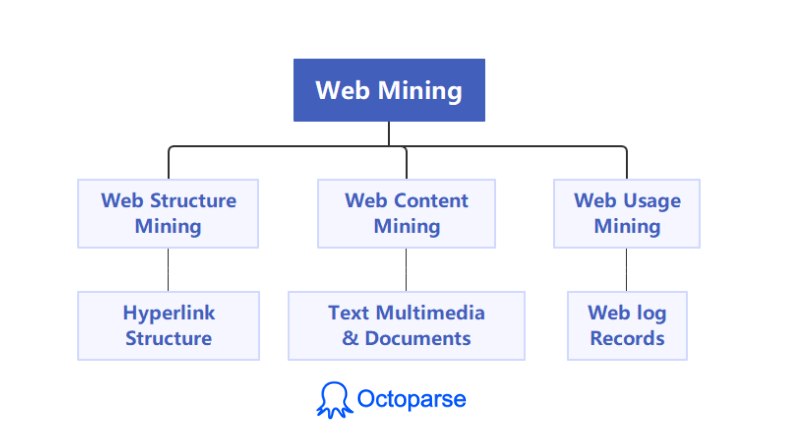
1. Web Content Mining
The process of extracting useful information from website content. This technique focuses on gathering and analyzing textual and multimedia data from web pages.
Popular Content Mining Tools:
- Octoparse – visual web scraping for non-coders
- Scrapy – Python-based framework for developers
- Beautiful Soup – Python library for HTML parsing
- Import.io – cloud-based data extraction platform
Extracted content includes but not limited to:
- News articles and blog posts
- Product catalogs and descriptions
- Customer reviews and comments
- Company information and press releases
2. Web Usage Mining
Web Usage Mining is used to analyze user behavior patterns from large datasets to predict user behaviors and identify trends. There are two main techniques for pattern analysis: pattern discovery tools and pattern analysis tools.
Popular Usage Mining Tools:
- R Programming – statistical computing and analysis
- Oracle Data Mining (ODM) – enterprise database mining
- Tableau – interactive data visualization
- Google Analytics (GA) – website traffic analysis
Key applications include but not limited to:
- Website traffic analysis
- Click-through rates and user journeys
- Session duration and bounce rates
- Conversion funnel optimization
Google Analytics that we are familiar with falls into this category. They are two types of techniques for patterns: pattern analysis tool and pattern discovery tool.
3. Web Structure Mining
Also known as link mining, this technique analyzes the link structure and relationships between web pages to understand website hierarchies and authority distribution.
Popular Usage Mining Tools:
- PageRank Algorithm – Google’s page ranking system
- HITS Algorithm – authority and hub identification
- NetworkX – Python library for network analysis
- Gephi – network visualization and analysis platform
Key applications include but not limited to:
- Discovers relationships between web pages
- Analyzes hyperlink structures and link patterns
- Maps website hierarchies and connections
- Identifies authoritative content sources
What is a Web Mining Tool?
A web data miner is computer software that uses data mining techniques to identify or discover patterns from large data sets, which includes content from websites, server logs, and other web-related data sources. The primary goal of web mining is to find patterns, relationships, and insights that can be used for various purposes, such as market research, customer behavior analysis, and improving user experience on websites.
7 Best Web Data Miners to Get Data Easily
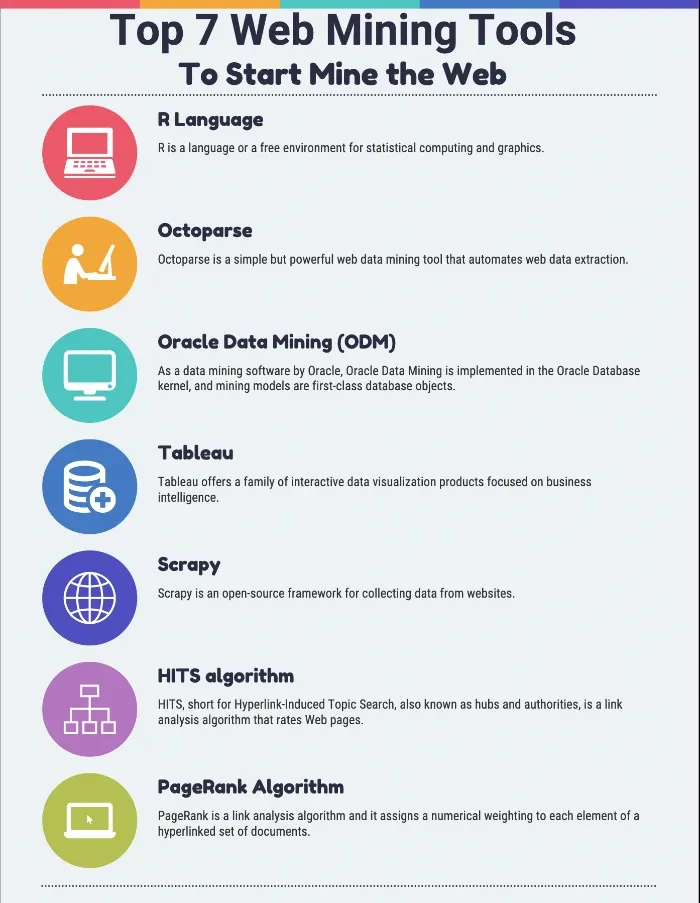
1. Octoparse
Octoparse stands out as the most comprehensive web mining software for users without coding experience. This powerful web data mining platform offers:
Key Features:
- Auto-detecting data extraction
- Pre-built templates for popular websites
- Advanced functions including AJAX support, and pagination
- Cloud-based processing and IP proxy integration
- Export to Excel, CSV, and database formats
How to Use Octoparse:
You can extract data by using Octoparse web data miner within 3 easy steps. Or you can follow Octoparse detailed user guide.
- Step 1: Copy and paste the target URL to Octoparse main panel after you have downloaded it on your devices.
- Step 2: Extract data by the auto-detecting mode and customize the workflow with the tips it gives. You can check the data fields from the Preview panel.
- Step 3: Run the task after you have a preview. After a few minutes, you can download the data to Excel, CSV, or other formats that are able for further use.
Supported Operating Systems: Windows XP/7/8/10 and macOS
Support Online Web Mining: Octoparse offers hundreds of online web scraping templates for popular websites. These templates enable users to effortlessly extract data from the web without coding skills needed, ensuring a seamless and efficient online mining experience.
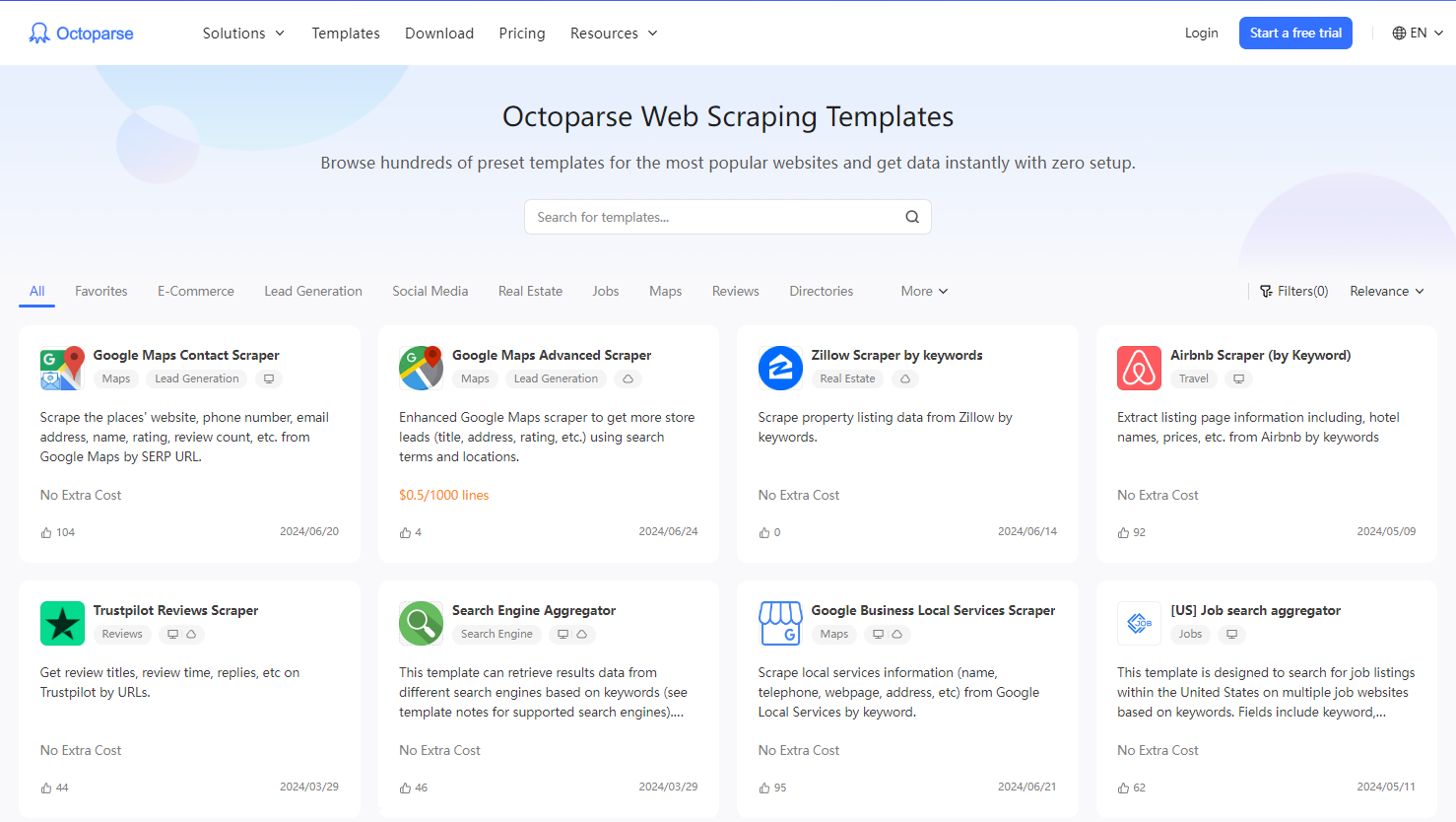
2. R
R provides a robust environment for statistical computing and web data mining analysis. Popular among data scientists for its extensive statistical libraries and machine learning capabilities.
Key Features:
- Comprehensive statistical analysis tools
- Advanced data manipulation functions
- Powerful visualization capabilities
- Integration with Python, Ruby, and Perl
Supported Operating Systems: UNIX platforms, Windows, MacOS
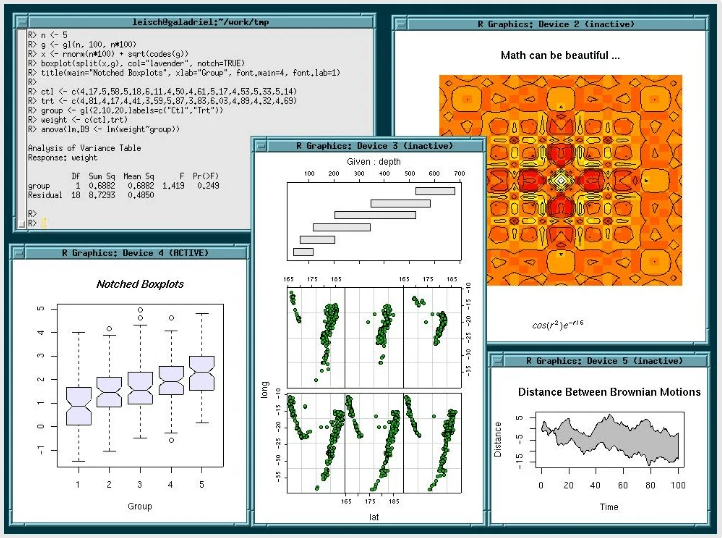
3. Oracle Data Mining (ODM)
Oracle Data Mining is a data mining software by Oracle. Oracle Data Mining is implemented in the Oracle Database kernel, and mining models are first-class database objects.
Key Features:
- Built-in database integration
- Enterprise-level scalability
- Advanced analytics and predictive modeling
- Structured data processing
Supported Operating Systems: Microsoft Windows
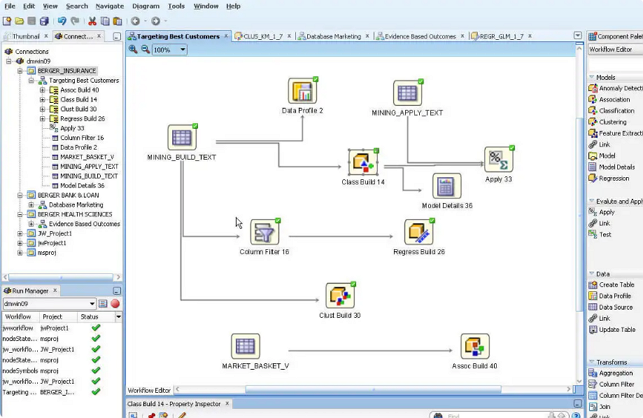
4. Tableau
Tableau transforms complex datasets into interactive dashboards, making it ideal for web mining visualization and business intelligence.
Key Features:
- Drag-and-drop interface
- Real-time data visualization
- Interactive dashboard creation
- Business intelligence integration
Supported Operating Systems: Mac, Windows
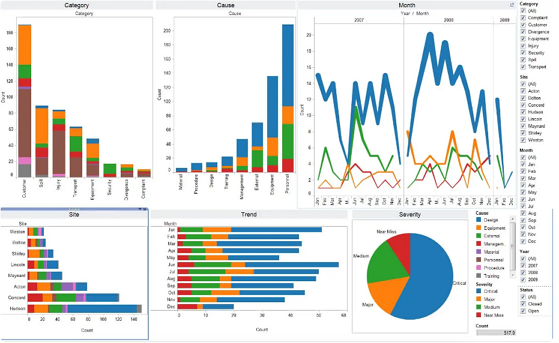
5. Scrapy
Scrapy is an open-source framework for collecting data from websites. It is written in Python and you can write the rules to extract web data. It is a tool used for extracting data from websites, a process also known as web scraping and has a wide range of uses such as data mining and automated testing.
Key Features:
- Spiders for crawling websites
- Selectors for data extraction
- Item pipelines for data processing
- Middleware for request handling
Supported Operating Systems: Linux, Windows, Mac, and BSD
6. HITS algorithm
HITS, short for Hyperlink-Induced Topic Search, also known as hubs and authorities, is a link analysis algorithm that rates Web pages. In the HITS algorithm, the first step is to retrieve the most relevant pages to the search query. This set is called the root set and can be obtained by taking the top pages returned by a text-based search algorithm.
A base set is generated by augmenting the root set with all the web pages that are linked from it and some of the pages that link to it. The web pages in the base set and all hyperlinks among those pages form a focused subgraph.
Key Features:
- Authority and hub identification
- Link analysis and ranking
- Topic-focused web mining
- Search result optimization
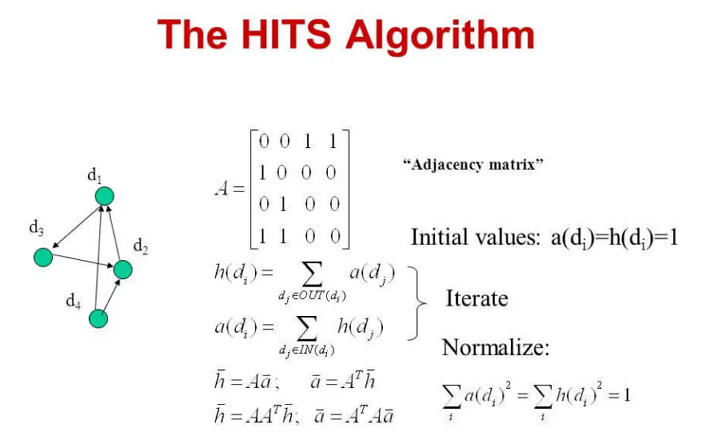
7. PageRank
PageRank Algorithm is a popular Web structure Mining Algorithm. PageRank is a link analysis algorithm and it assigns a numerical weighting to each element of a hyperlinked set of documents, such as the World Wide Web, with the purpose of “measuring” its relative importance within the set. The algorithm may be applied to any collection of entities with reciprocal quotations and references.
Key Features:
- Numerical weighting of web pages
- Relative importance measurement
- Link authority analysis
- Web document ranking
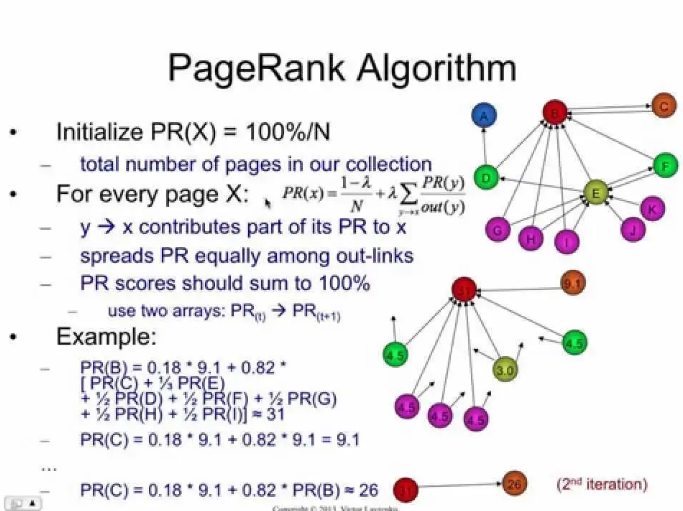
Conclusion
Hope you can get some ideas about web mining and web mining tools after reading this article. Choose the most suitable one according to your needs, and Octoparse will be the most recommended one if you don’t have coding knowledge but need data regularly. Start your data mining journey from now on with Octoparse’s 14-day free trial.
FAQs
1. What Makes an Effective Web Mining Tool?
A quality web miner should combine data mining techniques with user-friendly interfaces to identify patterns from large datasets. These tools process content from websites, server logs, and various web-related data sources to extract structured data, natural language processing capabilities, and machine learning insights for information retrieval and sentiment analysis.
2. How to choose the Right Web Mining Software?
When selecting web mining tools, consider these factors:
- Technical expertise required
- Data volume and complexity
- Budget and licensing costs
- Integration capabilities
- Support and documentation
For businesses seeking comprehensive web data mining without coding requirements, Octoparse offers the most accessible solution with professional-grade capabilities.
3. What Are the Key Differences Between General Data Mining and Web Mining Tools?
General data mining tools analyze structured datasets from databases and spreadsheets, while web mining tools handle unstructured web data like HTML, images, and dynamic content. Web mining tools also manage technical challenges like JavaScript rendering and anti-bot measures.
4. What Advanced Web Mining Applications Does Modern Web Mining Software Support?
Modern web mining software supports sophisticated applications including:
- Crypto webminer detection and analysis
- Structured data extraction from web documents
- Natural language processing for content analysis
- Sentiment analysis of social media and reviews
- Information retrieval from diverse web sources




